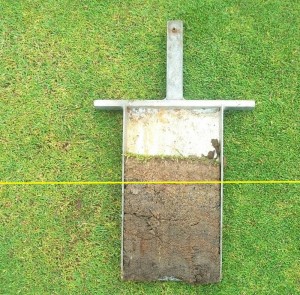
The sward on the majority of UK bowling greens consists of 3 main grass types; various bent grasses (Agrostis), various Fescues (Festuca) and Annual Meadow Grass (Poa annua). Of these, the bent grasses and annual meadow grass are prolific thatch producers.
Thatch consists of dead and dying roots, shoots, leaves, stolons and rhizomes and in comparison to a completely natural setting, it builds up remarkably quickly on fine turf such as bowling greens. This is due to a few factors that are unique to sports surfaces, mainly related to their use and maintenance. Chief among these factors is compaction as we saw yesterday.
Some thatch is good and in fact essential to maintaining the integrity of the surface, but if a layer builds up beyond that (thicker than about 8mm) it can really start to cause big problems.
Flooding, disease, uneven surfaces, Localised Dry Patch, root-break, skinned heads, Read more



